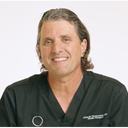The one truth with fat transfer is that you can't inject more fat than what is available to safely harvest as a graft! Thus, people that don't have a lot of fat on their bodies to begin with won't have a large volume available for grafting or transfer. When we harvest fat for transfer, we are essentially doing a liposuction procedure on the donor area. Although our first intent may not be to improve the contour of the donor site, I think we would all agree that at the least we certainly don't want to make the appearance of the donor site worse. Thus, we can only take enough fat that is available to remove without creating deformities. Next, the fat has to be processed for transfer, and although there are many ways to do this, they all result in some decrease in the volume of the total amount of aspirate, or tissue and fluid removed with the liposuction, that can be used for transfer. None of these amounts that I have described can be determined precisely before surgery, so to say that you were "quoted" these amounts is a bit misleading. They may have been estimates, but you shouldn't rely on them as exact amounts of expected fat transfer volume. Furthermore, there is always some loss of volume of the graft after fat transfer, sometimes as high as 40 - 50 % of the volume depending upon the methods of fat preparation and injection, and thus, even though you might have 1000 cc injected at the time of surgery, it is quite likely that you will not wind up with all of that volume in the long run. Again, how much of the fat graft survives long term is impossible to determine accurately before, or even during, surgery. Although I haven't seen pictures of you, I suspect that at 5 feet tall and 107 pounds, while you may feel that you have plenty of fat in your flanks and "pooch," your volumes aren't really that high. I might be wrong, but I seriously doubt that 1500 cc of fat is available for viable grafting on a lady your size. Additionally, all of this discussion so far has ignored the issue of how much fat is advisable to inject into a single area at a single session. Transferred fat needs a robust blood supply to survive long term, and the more fat you inject into the same area, the more you risk that larger amounts of your injected fat will wind up without blood supply and will die. Again, I do a fair amount of this type of surgery, and I would rarely expect to get 1500 cc into the breasts of a lady your size, even if I had it available to me at harvest.My best advice is to select a board certified plastic surgeon with experience in fat transfer to the breast who can demonstrate good results and rational plans without taking unnecessary risks and pushing limits needlessly. You should be able to get unbiased advice from such a surgeon, and in the end, if you are not a good candidate for the procedure, he or she should be up front with you and offer other options. If you are a candidate, you should be given realistic expectations with no promises of success - as always, if it seems too good to be true, it probably is! Good luck.
